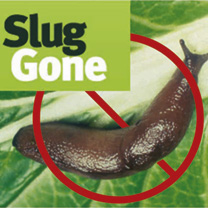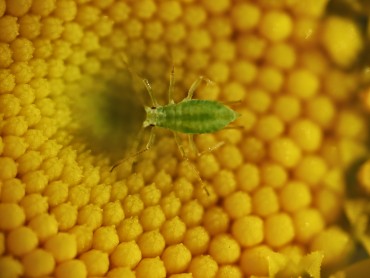Native to Asia, the Box Tree Moth (Cydalima perspectalis) was first reported in the UK in 2007 and has since become widespread in the south. The impact of its caterpillars on box plants (Buxus) can be is devastating and hedges can suffer defoliation.
Identifying the Culprits
Box Tree Caterpillars
Box Tree Caterpillars can completely defoliate box plants and there are several generations of caterpillars in a season from April-October. The moths lay a sheet of pale yellow flat eggs that overlap each other on the underside of leaves. The hatching larvae feed within webbing and are greenish-yellow with black heads.
As the caterpillar larvae mature, their green bodies develop dark brown stripe. Very mature larvae have thick black and thin white stripes down their bodies, with large black dots outlined in white.
The caterpillars start at 15-20mm long and grow up to 40mm long. They then develop into pupae, which wrap themselves in white webbing.
Box Tree Moths
The Box Tree Moths has a mainly white body, a brown head and white wings – with a wingspan of about 40mm.
Signs of Damage
Box Tree Caterpillars feed on Box leaves, leaving the plant disfigured with patches of what looks like dieback (not to be confused with box blight – a fungal disease, causing brown leaves and bare patches). In extreme cases, defoliation can occur.
Pest Control
If you have small Box bushes, the larvae can simply be removed by hand. However, this is unlikely to be effective on large, older topiary or bushes. Highly attractive pheromone lures have been designed to specifically attract male Box Tree Moths into traps. The pheromone attracts the male moths to the lure, which then drop down into a funnel trap filled with water. By catching male moths, mating and egg-laying can be reduced, and populations monitored for additional control measures.
Installing Your Traps
Pheromone traps include a lure, which should be removed from its sachet and placed in the small cage holder in the top of the trap. Next, add some water to the trap bucket. This will need to be regularly replaced – the funnel trap has a clear bottom, so catches and water levels can be observed.
Hang the trap on a pole, cane or stick close to the vulnerable Box plants. This should be in an open area, so the moths can be easily attracted to fly in.
Box Tree Moth flying season is between April to October when there can be up to three generations of the pest. Each lure lasts up to six weeks when used with one of our unique traps. These replacement lures can be used as needed to cover a whole season and reduce damage to your box tree hedges.
View our complete range of garden pest control products here.
Last Updated on December 22, 2023 by Suttons Horticultural Team






All the scientific data suggests that although pheremone traps will certainly reduce the number of male moths, it will not eliminate them, so that it is inevitable that some of the later emerging females will be fertilised. One fertile female can lay enough eggs to produce a population that can strip a small garden box feature. Your ad ought to make it a great deal clearer that the trap will be worthless without constant vigilance.
I fail to see why I should have to give personal contact details to log this comment!
My box plant has no leaves left and full of caterpillars should I chop it down is it dead? Can the caterpillars live with no leaves left on the plant?
I note that advice is birds do not eat the catapillers on box hedges
I saw sparrows go fo the catapillers in large numbers on my box plant